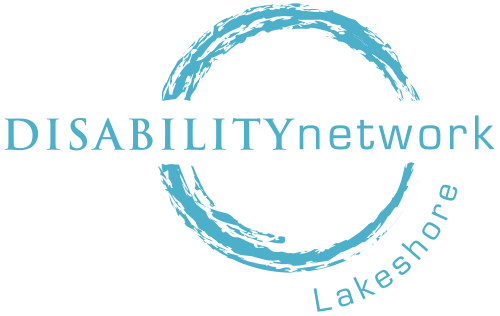Social Security Disability
So you’re ready to file for Social Security benefits, but don’t know where to start? Our staff at Disability Network Lakeshore can help! We offer free consultations and are happy to answer any of your questions. Whether you have a visible or hidden disability that limits your ability to work, our team will guide you through the process.
The first step is to determine if your medical conditions qualify under the Social Security Administration’s (SSA) stipulations.
The Social Security Administration (SSA) uses a step-by-step process involving five questions to determine whether you are disabled.
- Are you working?
If you are working in 2021 and your gross earnings average more than $1,310 a month, you generally cannot be considered disabled. For blind individuals = $2,190/month - Is your condition “severe”?
Your condition must interfere with basic work-related activities for your claim to be considered. If it does not, we will find that you are not disabled. - Is your condition found in the list of disabling conditions?
For each of the major body systems, we maintain a list of medical conditions that are so severe they automatically mean that you are disabled. If your condition is not on the list, we have to decide if it is of equal severity to a medical condition that is on the list. If it is, we will find that you are disabled. - Can you do the work you did previously?
If your condition is severe but not at the same or equal level of severity as a medical condition on the list, then we must determine if it interferes with your ability to do the work you did previously. If it does not, your claim will be denied. - Can you do any other type of work?
If you cannot do the work you did in the past, we see if you are able to adjust to other work. They consider your medical conditions and your age, education, past work experience, and any transferable skills you may have. If you cannot adjust to other work, your claim will be approved. If you can adjust to other work, your claim will be denied.
The Holland SSA office services most of Allegan and Ottawa County residents.
657 Hastings Avenue
Holland, Michigan 49423
877-223-6062
**For some Allegan County residents, individuals will be serviced by the Kalamazoo SSA office.
317 South Drake Road
Kalamazoo, MI 49009
866-331-9088
Helpful SSA forms when filing for disability benefits:
- SSA 3368 – Adult Disability Report
- SSA 827 – Release of Information form
- SSA 16 – Application for SSDI
- SSA 8000 – Application for SSI
This information was obtained from Social Security Administration (SSA) website. Only SSA can make decisions about your case. This information was created by Disability Network Lakeshore and meant only to be a guide.
Social Security Program & Supplemental Security Income Program
The Social Security Program and the Supplemental Security Income Program are the largest of several Federal programs that provide assistance to people with disabilities. Both are administered by the Social Security Administration and only individuals who have a disability and meet medical criteria may qualify for benefits under either program. Both have the same disability criteria.


Social Security Disability Insurance (SSDI)
One of the Social Security Programs is Social Security Disability Insurance (SSDI). It pays benefits to you and certain members of your family if you are “insured” meaning that you worked long enough and paid Social Security taxes. The amount received is based on how much you earned and how much you paid in taxes.

Supplemental Security Income (SSI)
Another Social Security Program is the Supplemental Security Income (SSI) and it pays benefits based on financial need (current income and resources). The federal benefit rate for SSI is $794 a month for 2021.

Social Security Administration’s (SSA) application process is the same for both SSDI and SSI.
Application Process:
- An SSA claim representative can tell you which program to apply for – SSI or SSDI. The application is the same except SSI applicants are also required to complete an interview via phone or in-person.
- The application can be completed online (www.ssa.gov), at the local SSA office, or over the phone with an SSA claims representative. Attached is a list of what is needed to complete the application.
- You will be asked to sign a Medical Release form. SSA will request your medical records from your medical providers– you do not have to provide them.
- A few weeks following the application, you may receive forms to complete such as a Work History Report and an Adult Function Report. This is your opportunity to share how your disability is affecting you on a daily basis. They may also ask a family member or friend to complete the Adult Function report as well. If you are in high school or recently graduated, SSA may send a Teacher Questionnaire to the school.
- The process takes 3-6 months for a decision to be made.
SSA Internal Process for Claims:
- Most claims are processed through the local field SSA office. The field office is responsible for verifying non-medical requirements such as age, employment, marital status…
- The field office then sends the case to a Disability Determination Services (DDS) for evaluation of disability. This is most often in Kalamazoo. *Usually a letter is sent with a (269) phone number, if needed – call DDS with updates (recent ER visits, chiropractor, specialist visits, etc.)
- The DDS obtains evidence from the claimant’s own medical sources (SSA requests medical records from the medical providers you provided them). If that evidence is insufficient or not available, the DDS will arrange a consultative examination for the individual. Once the DDS has sufficient information they make the initial disability determination. The DDS returns the case to the field office.
- If the case is favorable, the field office computes the benefit amount and begins paying benefits. Most individuals receive a retro or back payment to cover the time they waited for a decision.
- If the case is not favorable, the file is kept in the field office in case the claimant decides to appeal the determination. Appealing the decision is required within 60 days and often individuals utilize legal representation.
If you need assistance in applying for SSDI, SSI, or to file a claim please call us at (616) 396-5326. Our staff is ready to help you.
We will need the following information to complete a Social Security disability application:
- Your address, Social Security number, and date of birth.
- If born outside the US, an immigrant, permanent resident, or naturalized citizen – Citizenship/residency documentation may need to be submitted to SSA.
- List of your medical and psychological conditions that prevent you from working.
- Your height and weight.
- Medications, related to the health conditions, which prevent you from working. Why you take it and who prescribed it. (Do not need dosage)
- List of significant medical tests and dates of surgeries, related to the health conditions that prevent you from working.
- List of medical providers and their addresses and phone numbers that have treated physical and mental health conditions which prevent you from working. Estimates of dates you were treated by them (does not need to be specific dates, just periods). The name of the hospital or medical facility will be OK if you cannot remember the name of the doctor.
- Names of your minor children.
- Current and previous spouse’s Social Security # (if available, it is not required) and DOB.
- Dates of marriage, divorce, and location of both.
- Name, address, and phone number of the person that knows about your disability (family member or friend).
- Worker’s compensation (if appropriate).
- Checking account number and routing number. This will be used for direct deposit of your checks if you are awarded benefits. You can also provide this information to SSA at a later date.
- Highest grade level completed. If you had/have an Individual Education Plan (IEP) the name of the most recent school you attended.
- W2s for the previous year, or estimate of your work earnings for the prior year.
- Estimate of work earnings for the current year – bring most recent paystubs if possible.
- Name and address of employer(s) if you worked this year or last year.
- List of past five jobs from the last 15 years: job title, dates worked (month and year), rate of pay, hours per day, and the number of days per week worked.

